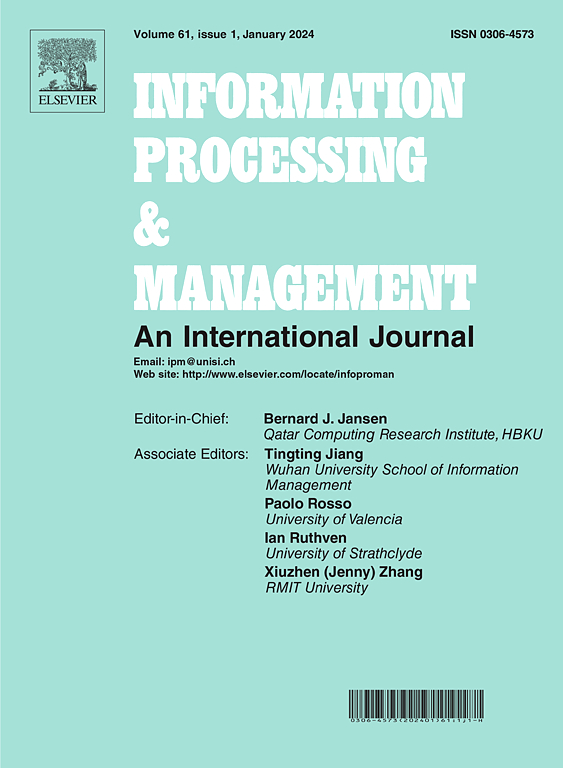Bi-directional feature learning-based approach for zero-shot event argument extraction
IF 7.4
1区 管理学
Q1 COMPUTER SCIENCE, INFORMATION SYSTEMS
引用次数: 0
Abstract
Recent research has shown that event argument extraction (EAE) methods based on transfer learning and data augmentation emphasize the contribution of contextual features and labeled features to zero-shot EAE tasks, respectively. However, these methods suffer from knowledge transfer insufficiency and context generation bias challenges. In this paper, we propose a bi-directional feature learning-based approach for zero-shot event argument extraction (BiTer), which gains bi-directional transferable knowledge and mitigates context generation bias. Specifically, BiTer contains source and target model training. During source model training, BiTer co-trains the contextual and labeled feature learning tasks on the source dataset. This step enables the target model to acquire bi-directional transferable knowledge, providing more appropriate feature representations for target events. In target model training, BiTer leverages the large language model to produce pseudo-arguments, and then the knowledge-embedded model generates training data of the target events based on them. This step mitigates context generation bias and makes BiTer learn a more comprehensive and precise feature of the target event. Extensive experiments on RAMS, WIKIEVENTS and ACE2005 have demonstrated BiTer achieves a new state-of-the-art level, with F1 in the zero-shot setting outperforming the baseline model by 4.6%, 7.5% and 0.4%, respectively.
基于双向特征学习的零射击事件参数提取方法
最近的研究表明,基于迁移学习的事件参数提取(EAE)方法和基于数据增强的事件参数提取(EAE)方法分别强调上下文特征和标记特征对零射EAE任务的贡献。然而,这些方法存在知识转移不足和情境生成偏差的问题。在本文中,我们提出了一种基于双向特征学习的零射击事件参数提取方法(BiTer),该方法获得了双向可转移的知识并减轻了上下文生成偏差。具体来说,BiTer包含源和目标模型训练。在源模型训练过程中,BiTer在源数据集上共同训练上下文和标记特征学习任务。这一步使目标模型能够获得双向可转移的知识,为目标事件提供更合适的特征表示。在目标模型训练中,BiTer利用大语言模型生成伪参数,知识嵌入模型在伪参数的基础上生成目标事件的训练数据。这一步骤减轻了上下文生成偏差,使BiTer学习到目标事件更全面、更精确的特征。在RAMS、WIKIEVENTS和ACE2005上进行的大量实验表明,BiTer达到了一个新的最先进的水平,在零射击设置下的F1分别比基线模型高出4.6%、7.5%和0.4%。
本文章由计算机程序翻译,如有差异,请以英文原文为准。
求助全文
约1分钟内获得全文
求助全文
来源期刊

Information Processing & Management
工程技术-计算机:信息系统
CiteScore
17.00
自引率
11.60%
发文量
276
审稿时长
39 days
期刊介绍:
Information Processing and Management is dedicated to publishing cutting-edge original research at the convergence of computing and information science. Our scope encompasses theory, methods, and applications across various domains, including advertising, business, health, information science, information technology marketing, and social computing.
We aim to cater to the interests of both primary researchers and practitioners by offering an effective platform for the timely dissemination of advanced and topical issues in this interdisciplinary field. The journal places particular emphasis on original research articles, research survey articles, research method articles, and articles addressing critical applications of research. Join us in advancing knowledge and innovation at the intersection of computing and information science.
 求助内容:
求助内容: 应助结果提醒方式:
应助结果提醒方式:


